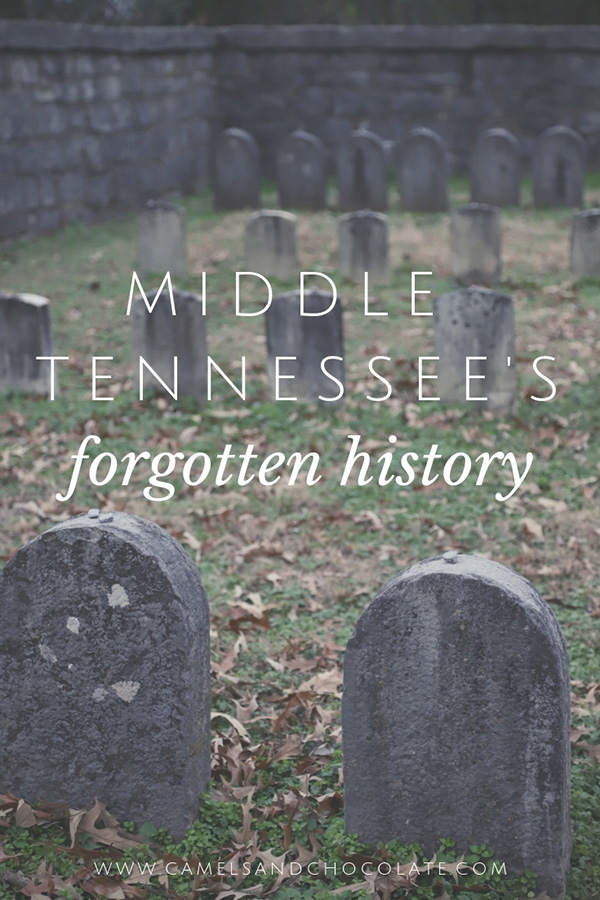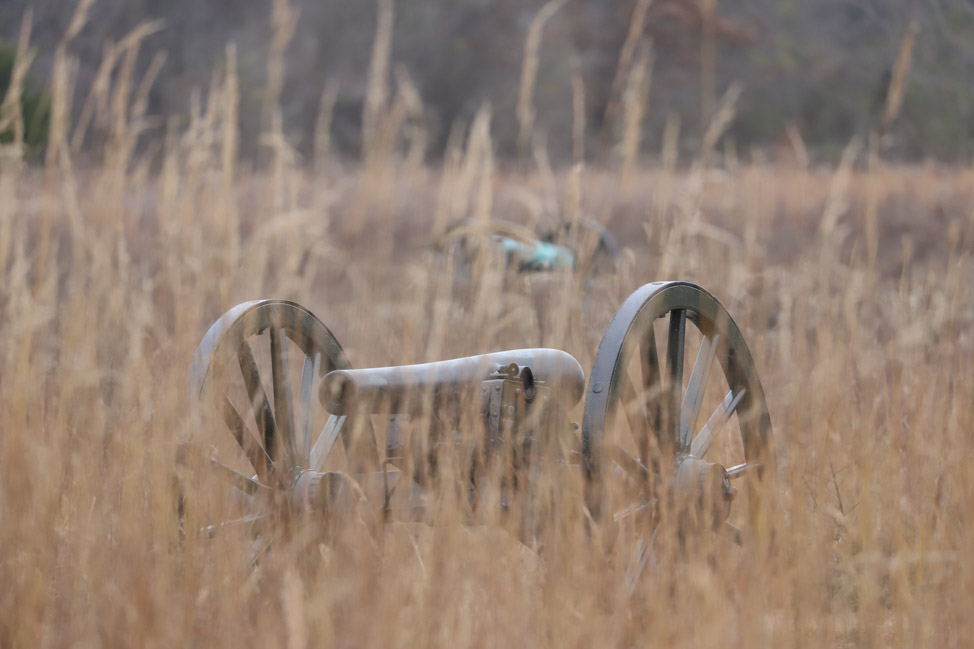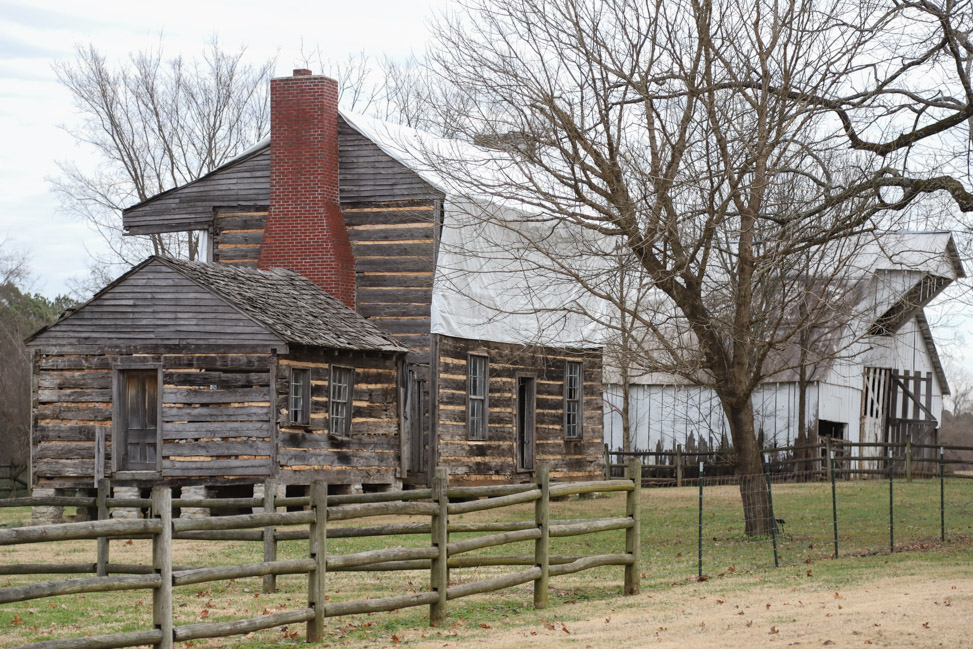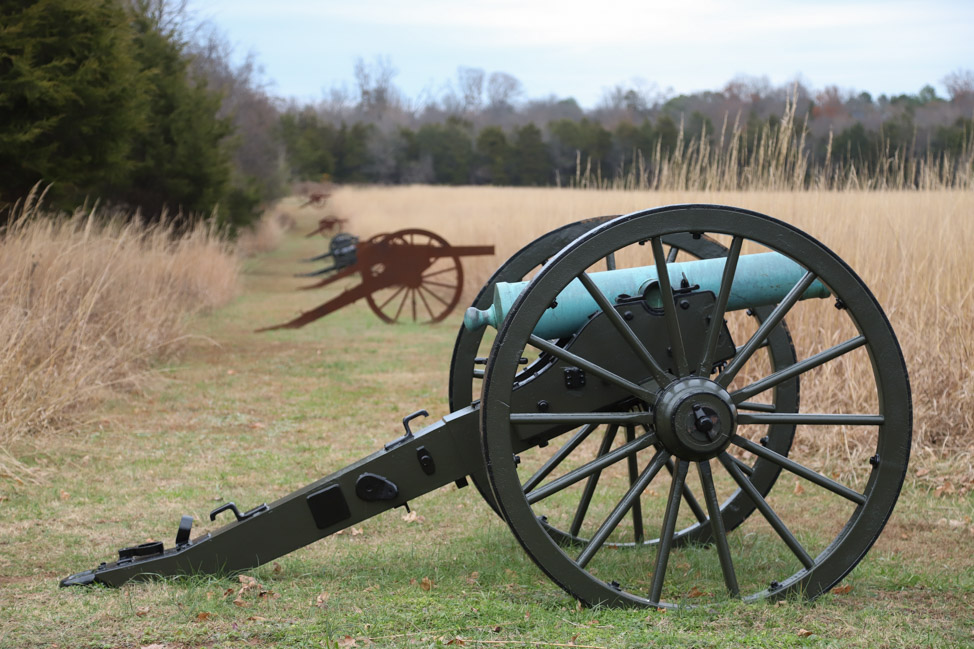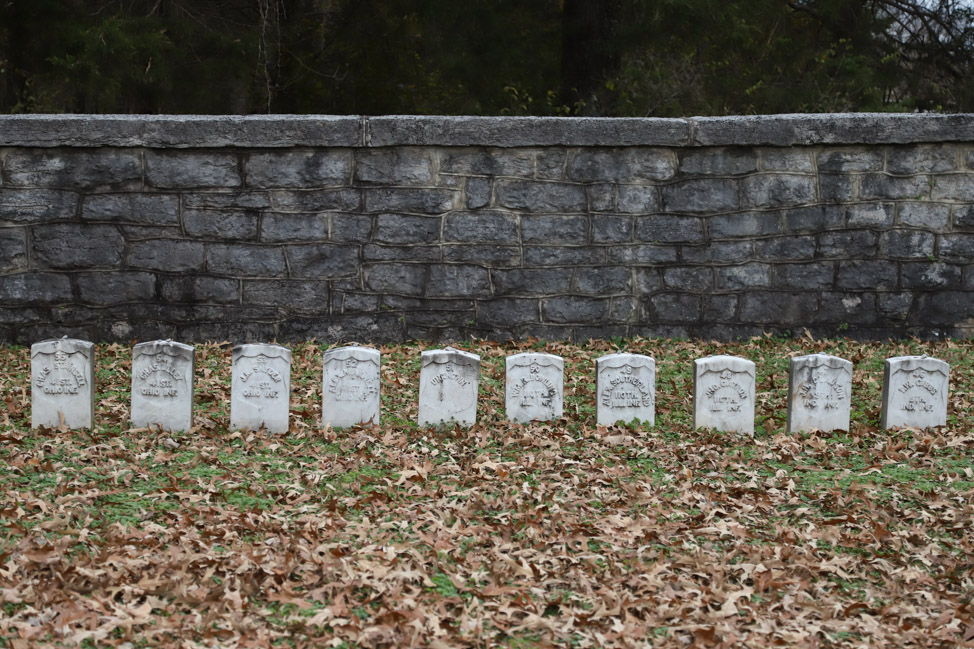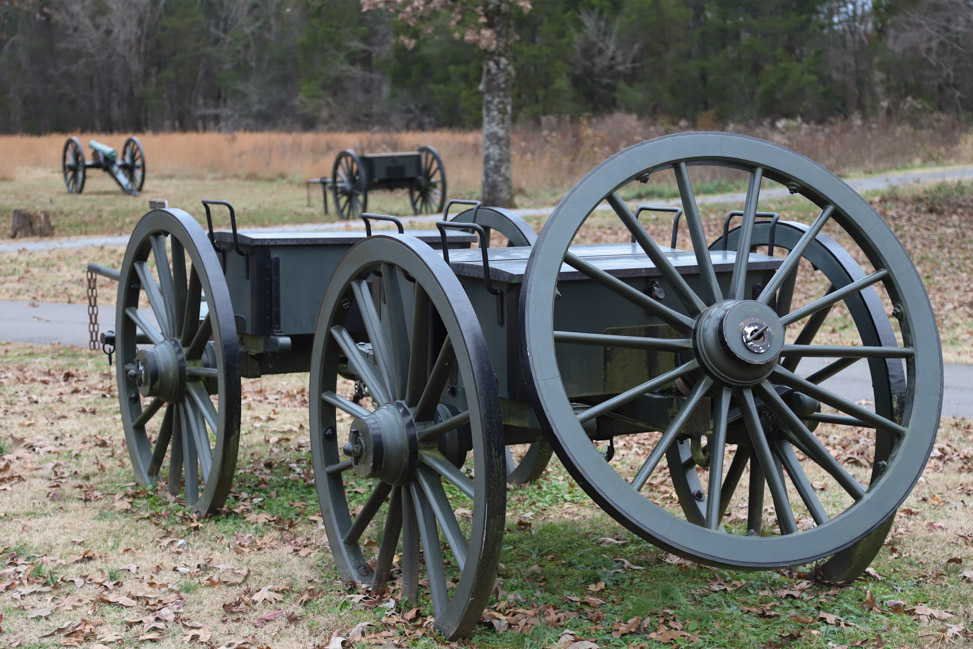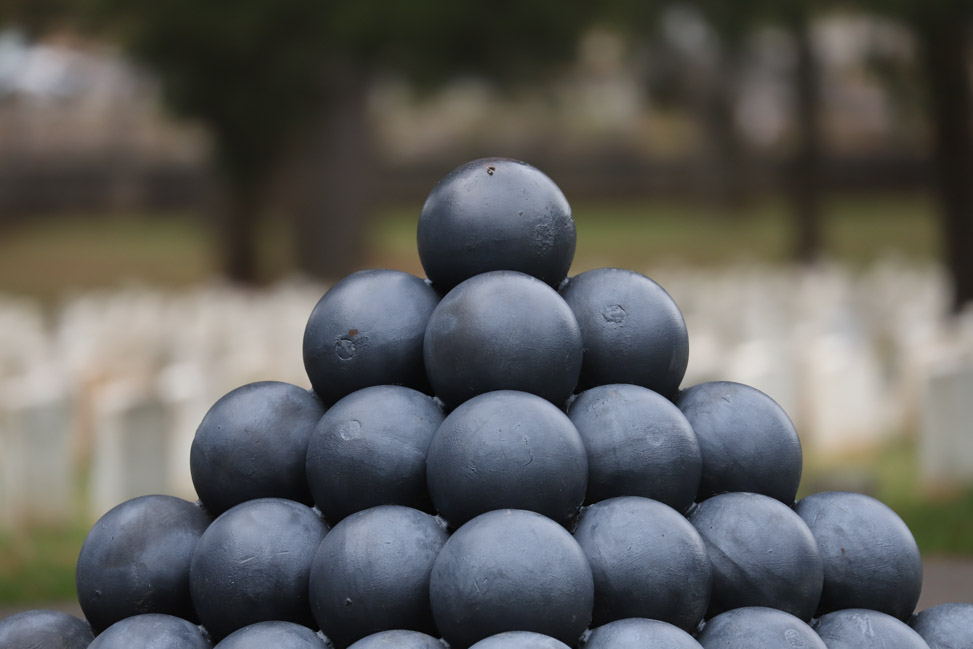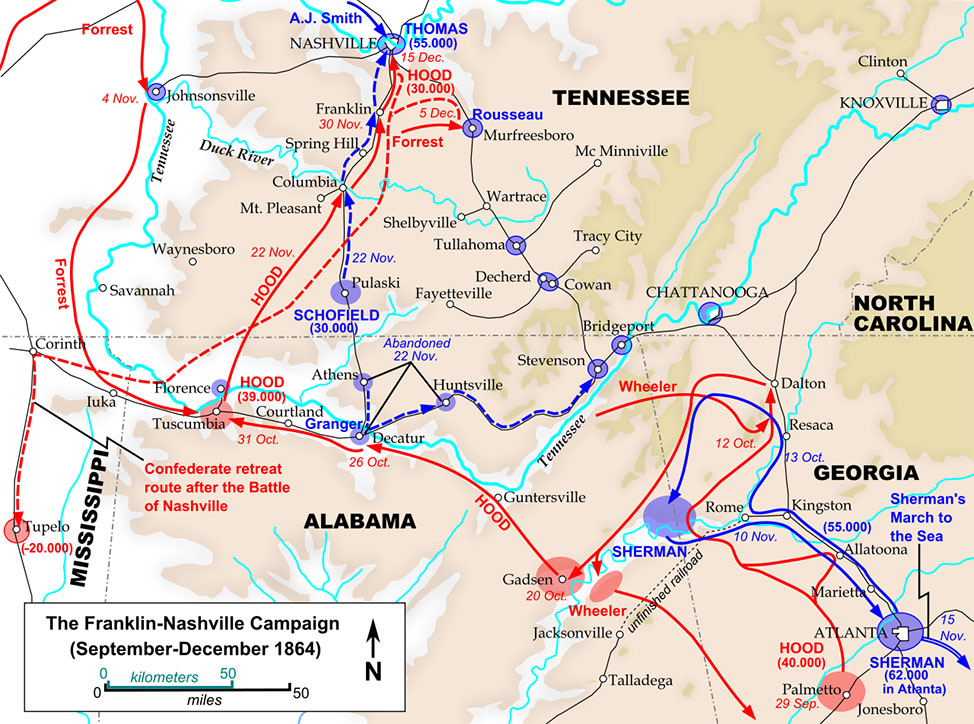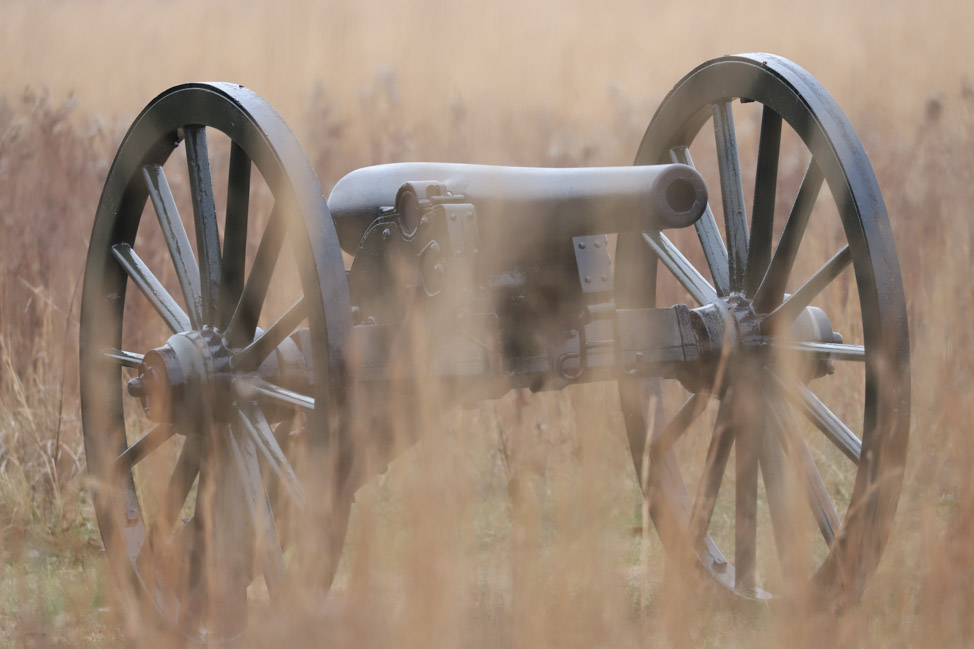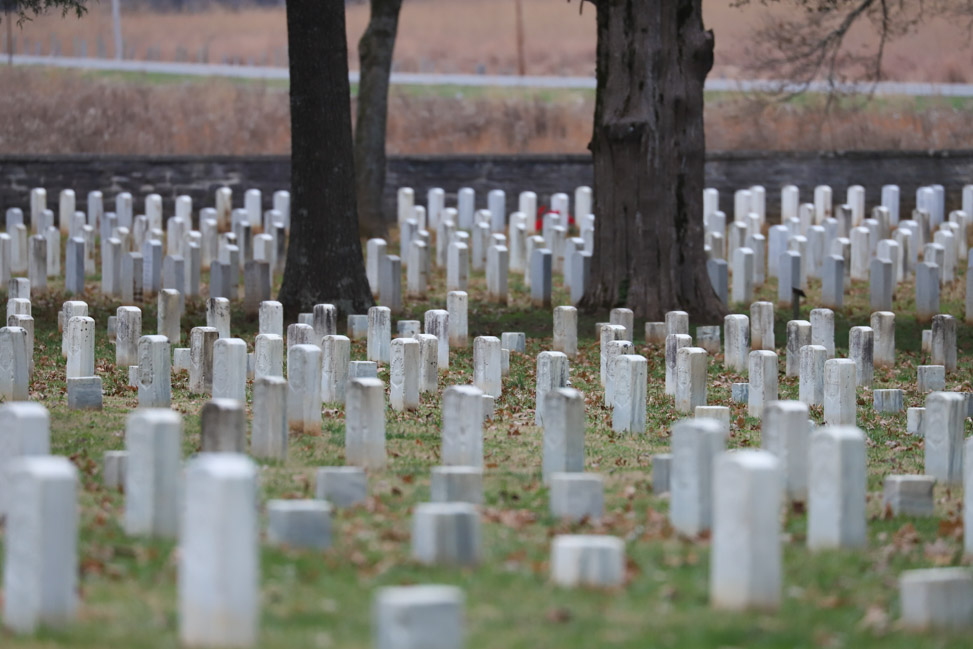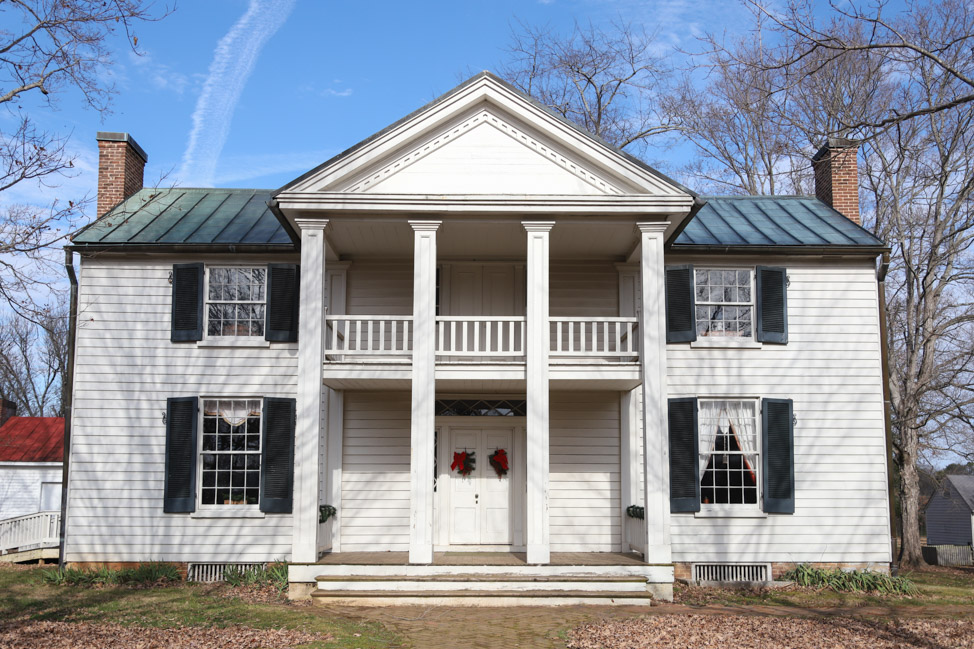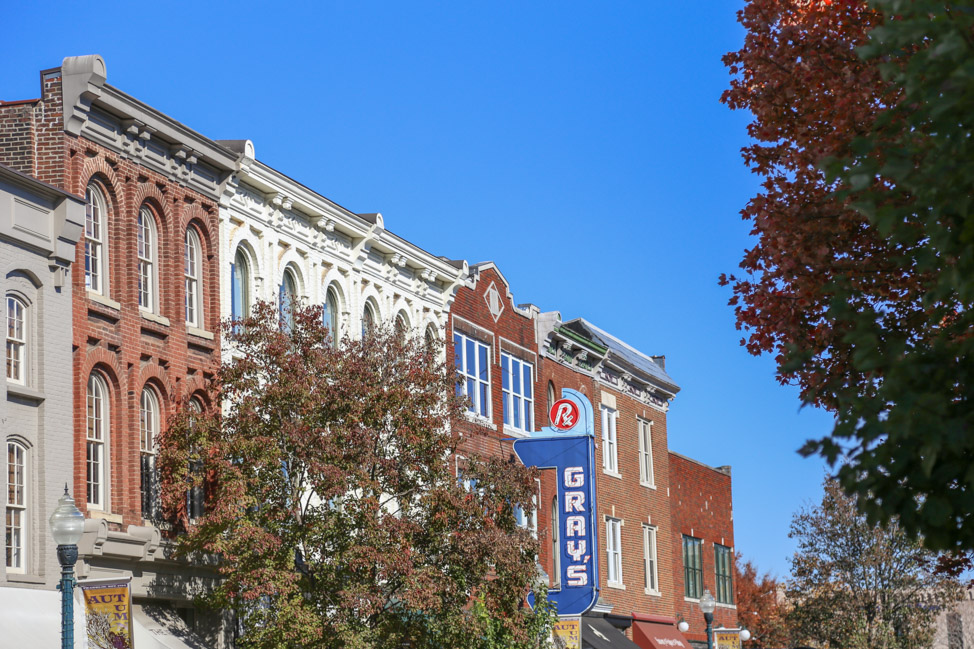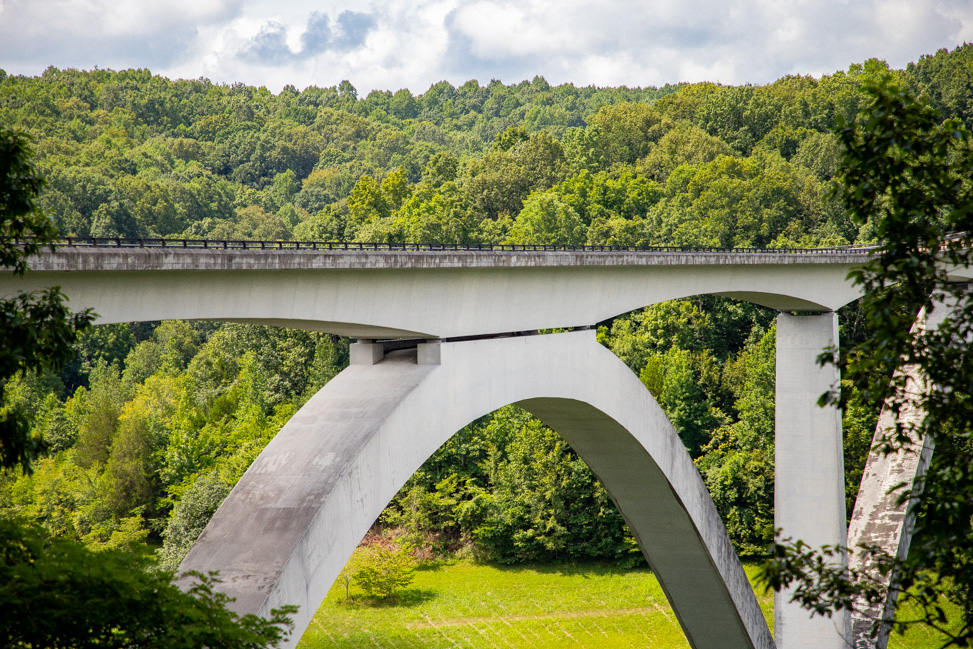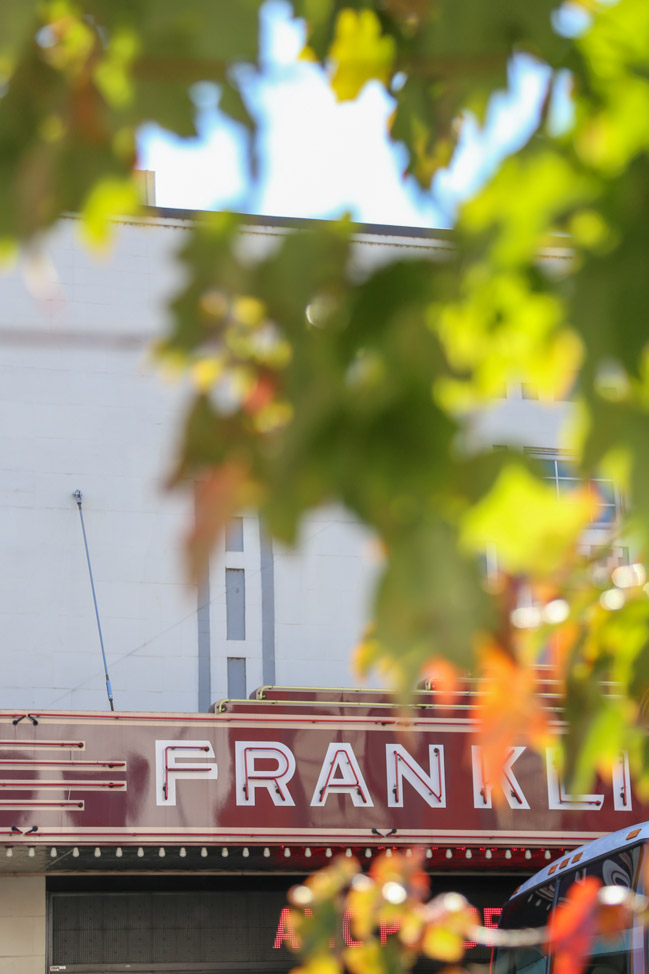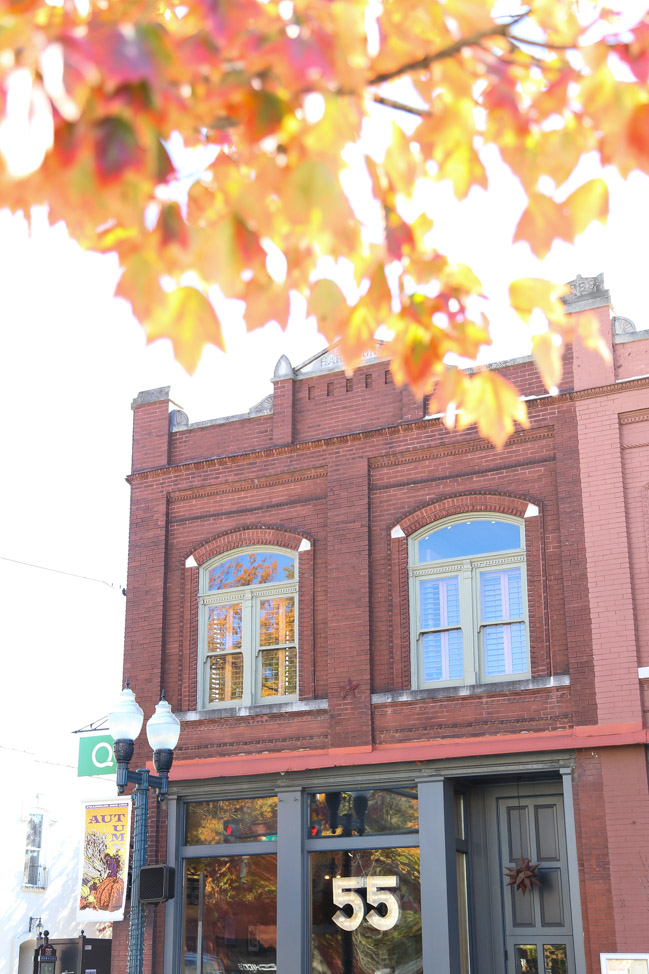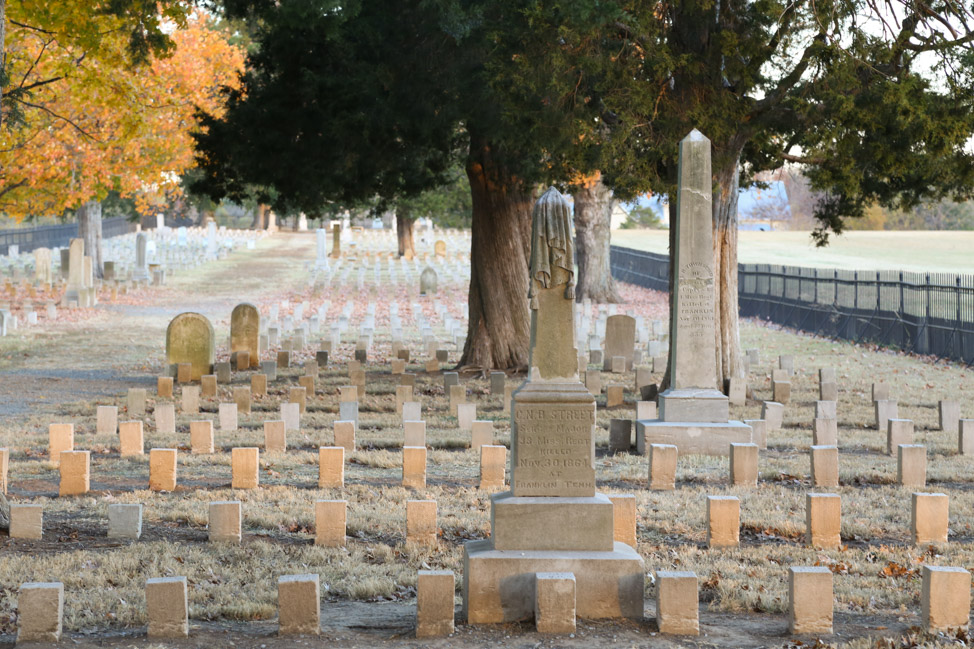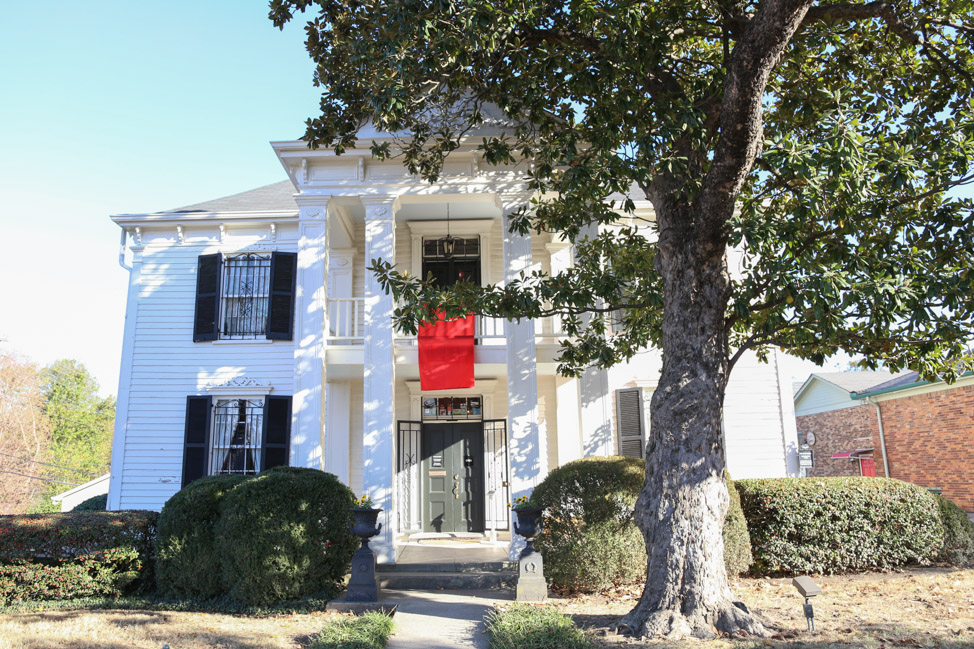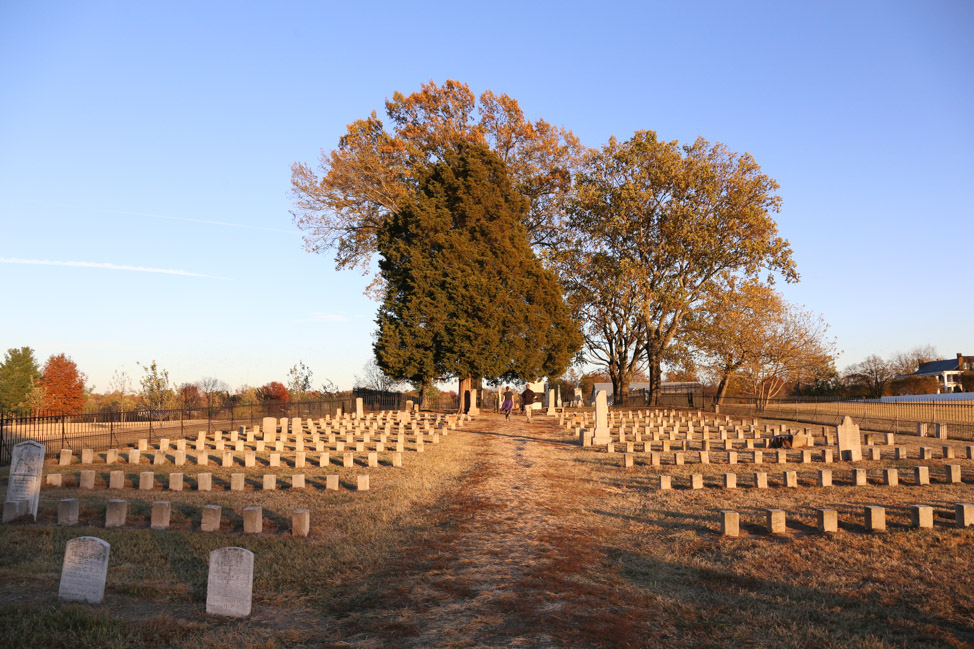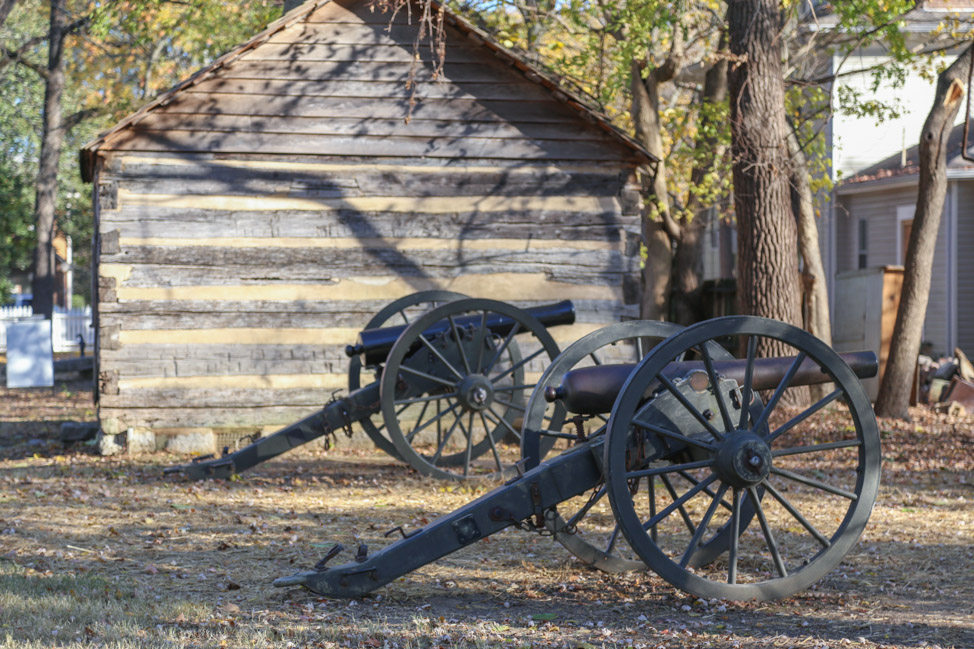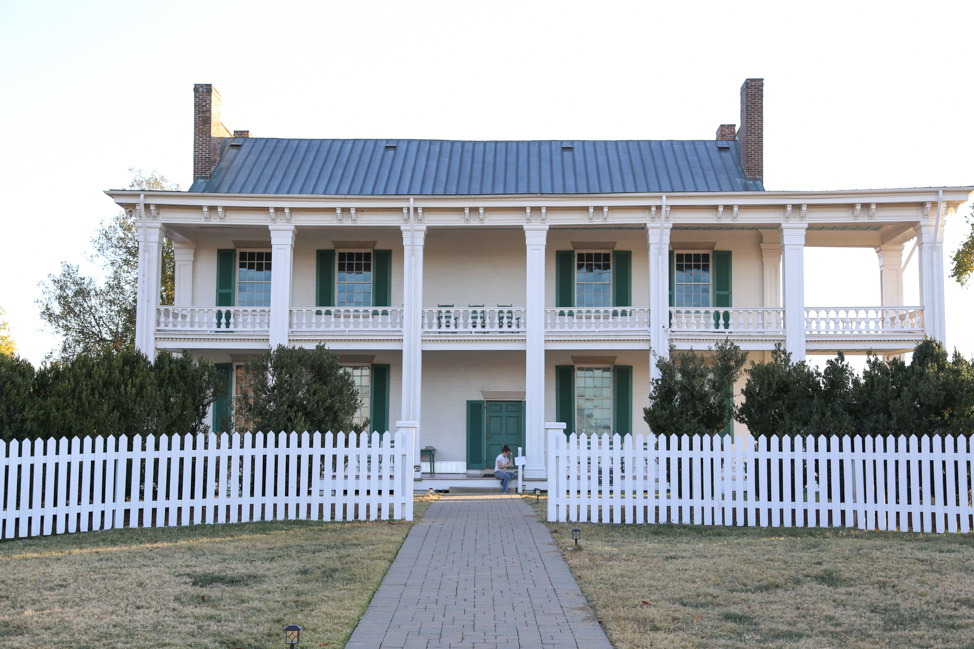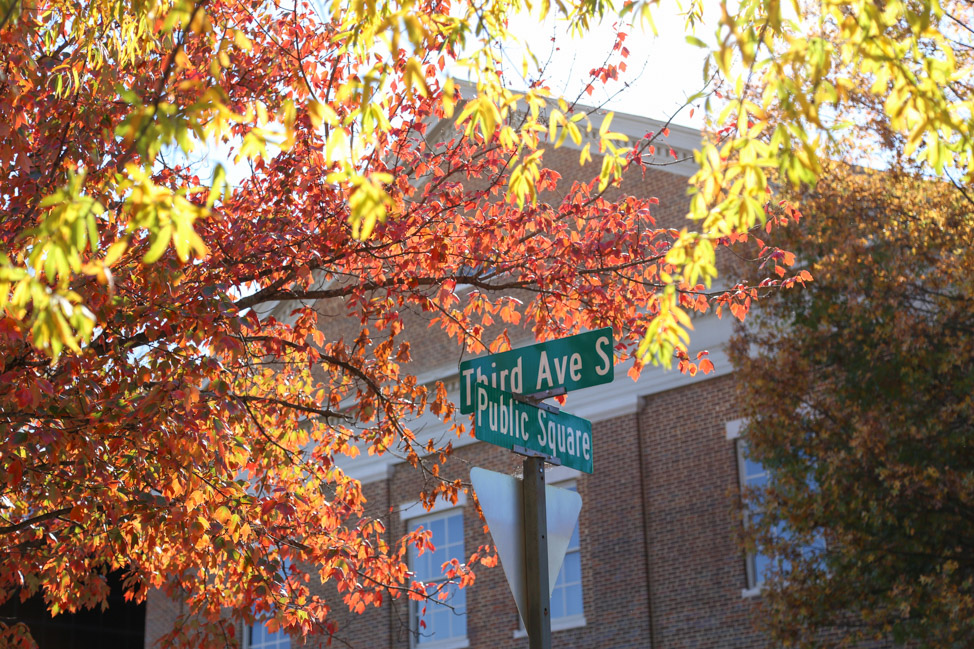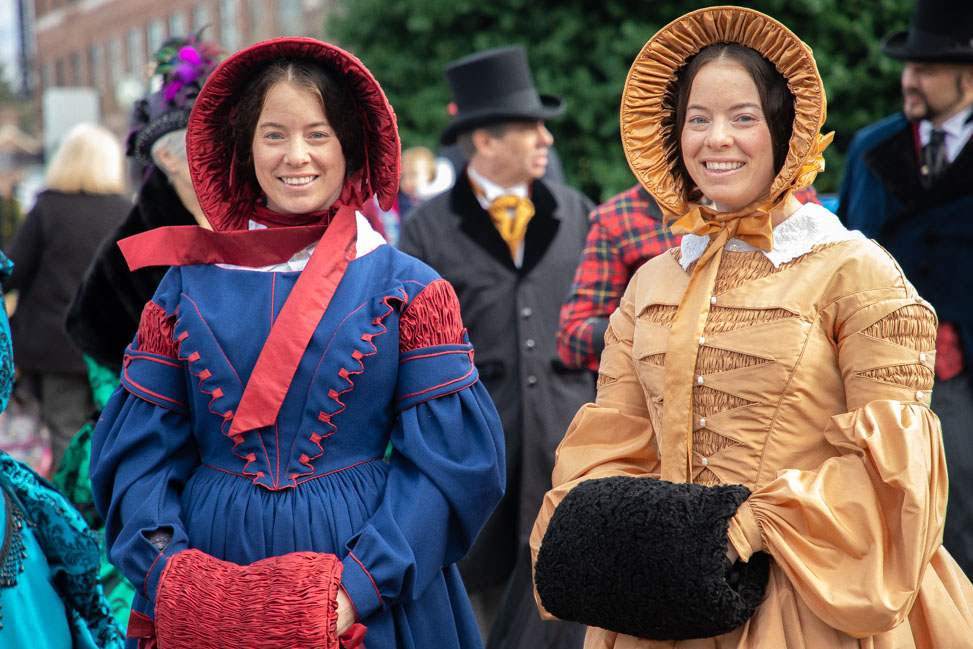Over the past couple years, we’ve worked on tourism projects with cities large and small across Tennessee, unearthing just how pivotal a role places like Franklin played in the Civil War. We’ve already covered a bit of Civil War history in Franklin but thought the Battle of Stones River and some of the lesser-known Civil War sites in Middle Tennessee also deserved a deep dive.
This post was last updated in August 2025.
The Civil War in Murfreesboro and beyond
It’s impossible to understand the geography and psychology of the American Civil War without including Tennessee—Rutherford County, in particular, had a front-row seat to the most devastating war in the history of our country. Armies on both sides, hundreds of thousands of men, marched across the centerline of the Volunteer State in the early 1860s, setting up bulwarks and camps, conquering strategic locations and suffering crippling losses—until almost the bitter end.
Situated in the heartland of the United States and at the crossroads of civilization in North America, Tennessee was an epicenter and busy intersection of opposing forces during the conflict, with only the great state of Virginia taking the questionable lead in the number of individual battles fought throughout. A strategic prize that both sides valued because of its major rivers, abundant resources and crisscrossing rail lines and turnpikes, Middle Tennessee became a superhighway of marching troops and supplies for the entire four years of the war.
Artifacts of warfare are still buried across the region among the soybean, wheat and cornfield landscapes, which were transformed into an angry battle of ideals and property rights. The countryside is infused with the legacy of the War Between the States, and while it’s easy to breeze through the area on Interstate 24 in search of country music or a scenic waterfall, these monuments to the struggles of our ancestors are beautifully appropriate places to pay some respect.
The battles that raged across the flatlands of this area range from skirmishes to all-out war, and Rutherford County was no stranger to bloodshed and spent ammunition; the Battle of Stones River alone resulted in 24,000 casualties, one of the worst of the entire conflict.
Key Civil War sites in Middle Tennessee
If you’re wanting to understand more of Murfreesboro’s Civil War history, here are some of the sites of fights that happened more than 2,900 times on the soil of Tennessee throughout the span of a few years.
Battle of Milton / Vaught’s Hill
A small skirmish that, nevertheless, resulted in the deaths of hundreds, this battle was waged just north of Readyville and east of Murfreesboro. Besides being an attack by the Confederate army that failed to overrun the Union soldiers on Vaught’s Hill, it also solidified the strength of an organized cavalry, with Colonel John T. Wilder’s “Lightning Brigade” being among the defenders that repelled a larger force.
Battle of Hoover’s Gap
Once again employing Colonel Wilder’s fast-moving brigade with a high degree of effectiveness, General William Rosecrans sent these mounted troops, followed by the regular army, in a big push to control this critical section of the war zone in 1863. Soldiers from both sides of the conflict were spread out from Wartrace to McMinnville and across Rutherford County before converging on areas near Beechgrove, right on Interstate 24 where the road narrows. Spencer Repeating Rifles, a favored firearm for Wilder’s troops, were a fairly new introduction to the Union Army, and had devastating effect.
map by Hal Jespersen, www.cwmaps.com
This battle, and subsequent engagement in Tullahoma, forced the entire Confederate army to retreat to Chattanooga, setting the stage for the Battle of Chickamauga, Battles for Chattanooga, and eventually a clear path for General Sherman’s army to conquer Atlanta and the remainder of the deep South.
Battle of the Cedars / Third Battle of Murfreesboro
General John Bell Hood, in a desperate attempt to force the Union’s hand in the Southern Theater and halt Sherman’s march from Atlanta to Savannah, led a series of assaults up and down the Middle Tennessee corridor in late-1864. The Battle of Franklin was the most notorious of these engagements due to massive casualties, but the Third Battle of Murfreesboro, led by General Nathan Bedford Forrest, was a raid intended to reinforce the Franklin-Nashville campaign by cutting off rail service between Nashville and Murfreesboro.
map by Hal Jespersen, www.cwmaps.com
While Forrest had some success in destroying tracks and depots, the stage had inevitably been set for the end of the war, and his efforts were some of the last battles of the Confederates in Tennessee before the war concluded the following year.
Battle of Stones River
Mustering more than 76,000 troops on both sides, Union and Confederate armies closed ranks in late-1862 for this battle, viciously fighting for control of Middle Tennessee. The federal army, commanded by General William Rosecrans, was positioned along the banks of the Stones River near Murfreesboro on the eve of the year, awaiting an attack from the Army of Tennessee, commanded by the erratic general, Braxton Bragg.
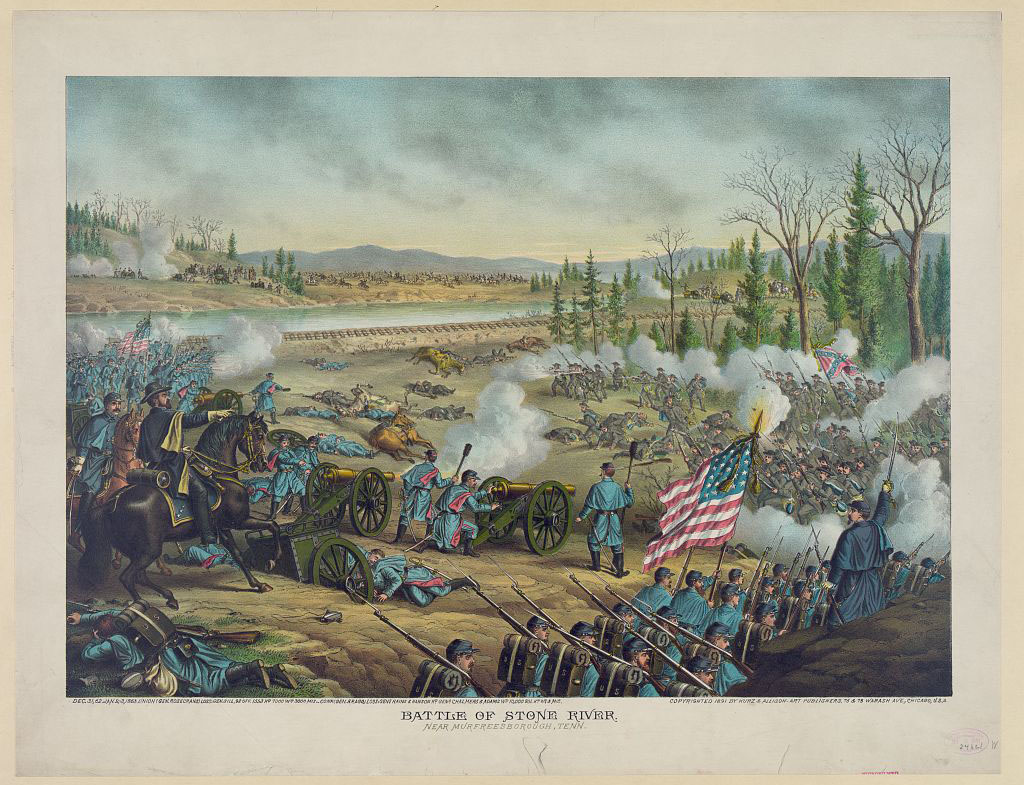
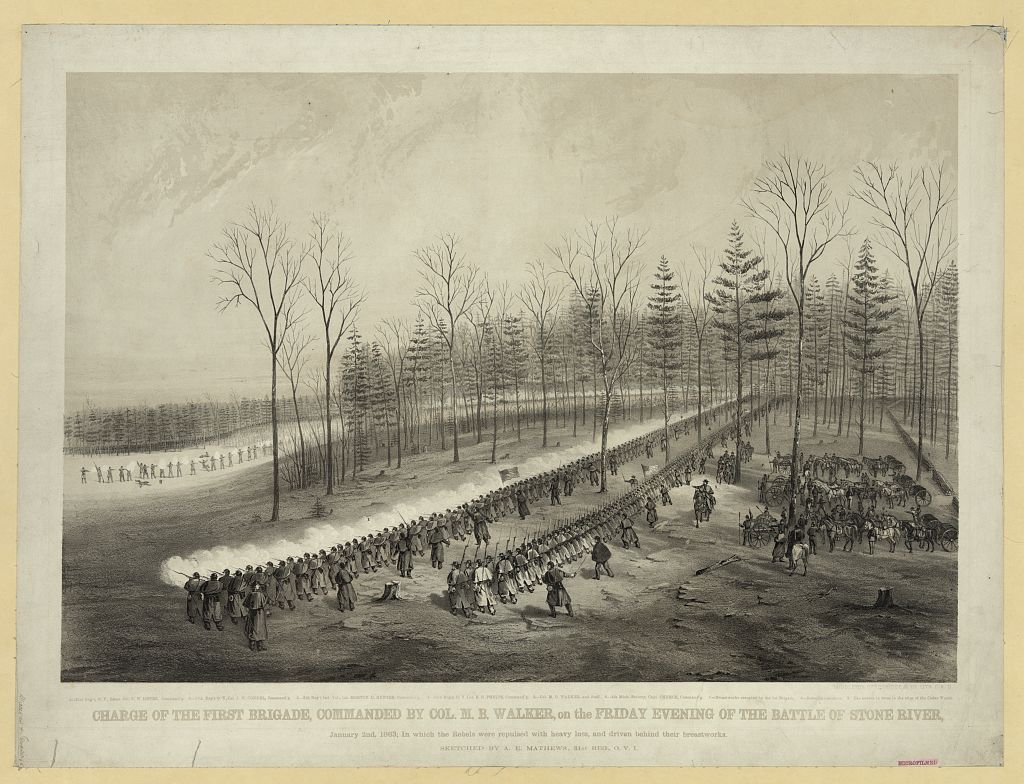
What followed was wholesale slaughter—on both sides—that ended in a draw. Bragg later retreated and regrouped in Tullahoma while federal forces claimed victory, despite the staggering number of dead and injured, estimated to be more than 25,000 over the course of three days.
Tullahoma Campaign
When General Braxton Bragg made his headquarters in Tullahoma following a retreat from Rutherford County, he was actively fighting with his subordinate commanders; Nathan Bedford Forrest, a brigadier general under his command, in particular, had threatened to kill him. While the rain poured down, turning the area into a sludge pool, Rosencrans gathered his forces in Murfreesboro in preparation for an assault down the sharply-terraced and well-defended spline of Middle Tennessee.
In late June 1863 when the machinery of war started rumbling up again, nearly 100,000 men on both sides were stationed at various points across Columbia, Shelbyville, Tullahoma, Manchester and McMinnville. The Duck River Line, formed by the Confederates, couldn’t hold as the Union side made a series of feints and smashed through critical choke points, such as Hoover’s Gap and Liberty Gap, both times heavily armed with the Spencer rifle, which proved absolutely deadly against regimental charges. The Confederate Army of Tennessee—at that point diminished by infighting and miscommunications between commanders yet still lethal—attempted to set up a command in Decherd before retiring across the Tennessee River to the Chattanooga area, setting the stage for the next phase of the conflict.
This is just a sampler of the numerous battles that took place on Tennessee soil, and if you’re interested in reading further, I recommend starting your education with this three-volume set by late historian Shelby Foote.
If you’re planning to visit Middle Tennessee soon, here are a few sites that will start your deep-dive into the Civil War history of the region:
- Stones River National Battlefield
- Fortress Rosecrans
- McFadden Farm
- General Bragg Headquarters Monument
- Evergreen Cemetery
- Hazen Brigade Monument
- Artillery Monument
- Rutherford County’s Historic Cemeteries
- Sam Davis Home & Plantation
- Oaklands Mansion
- Maplewood Cemetery
- Bell Buckle
